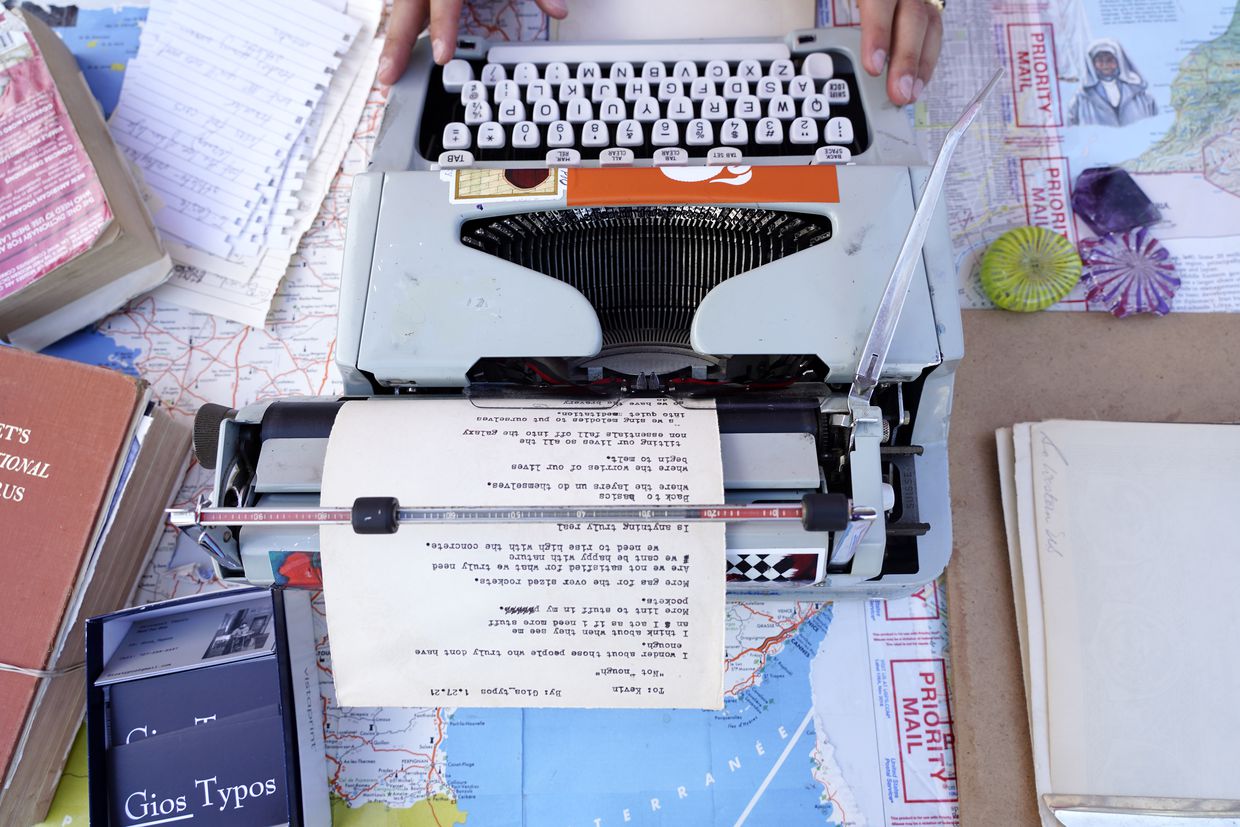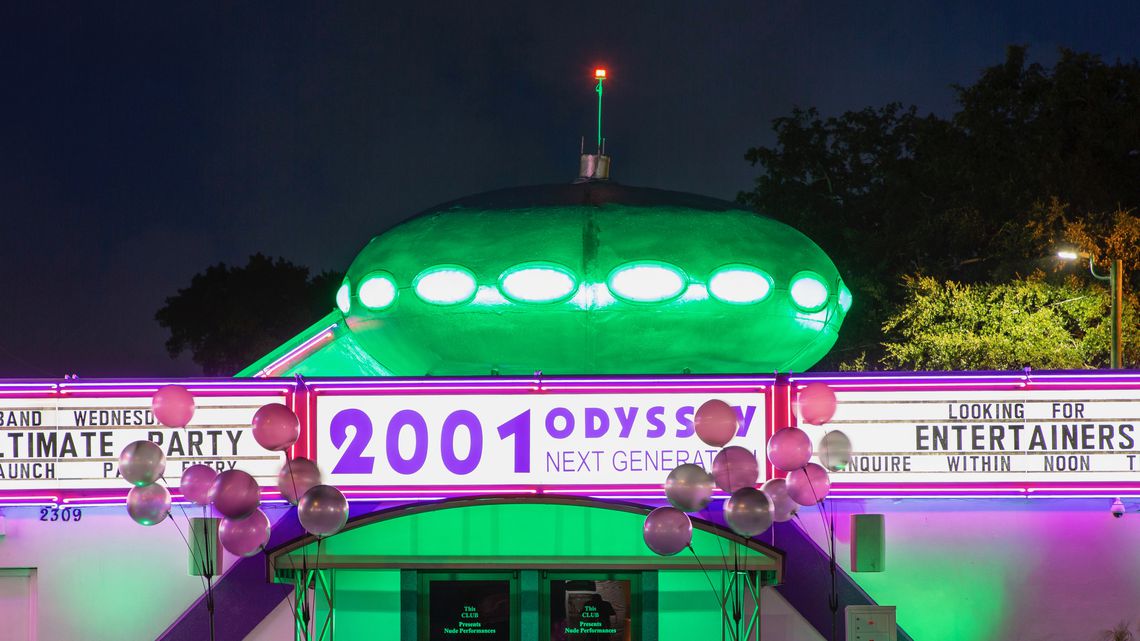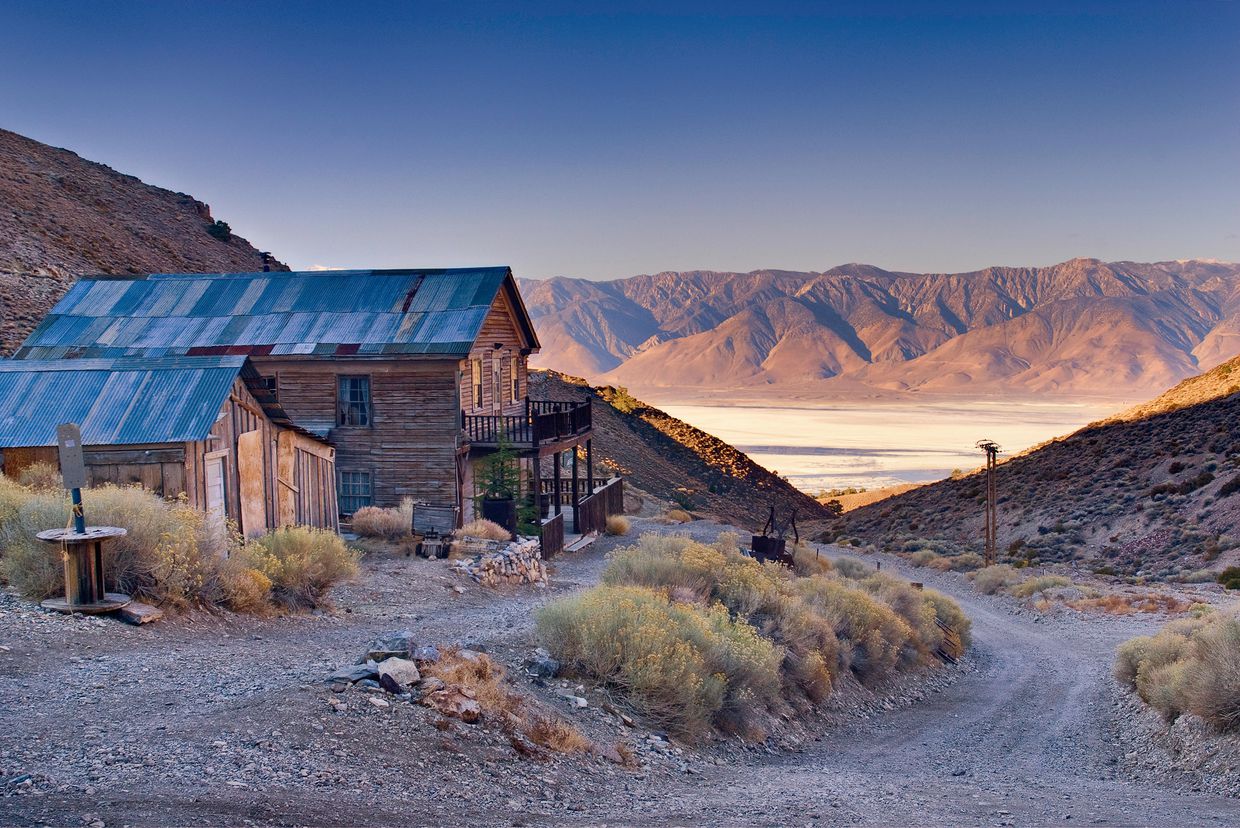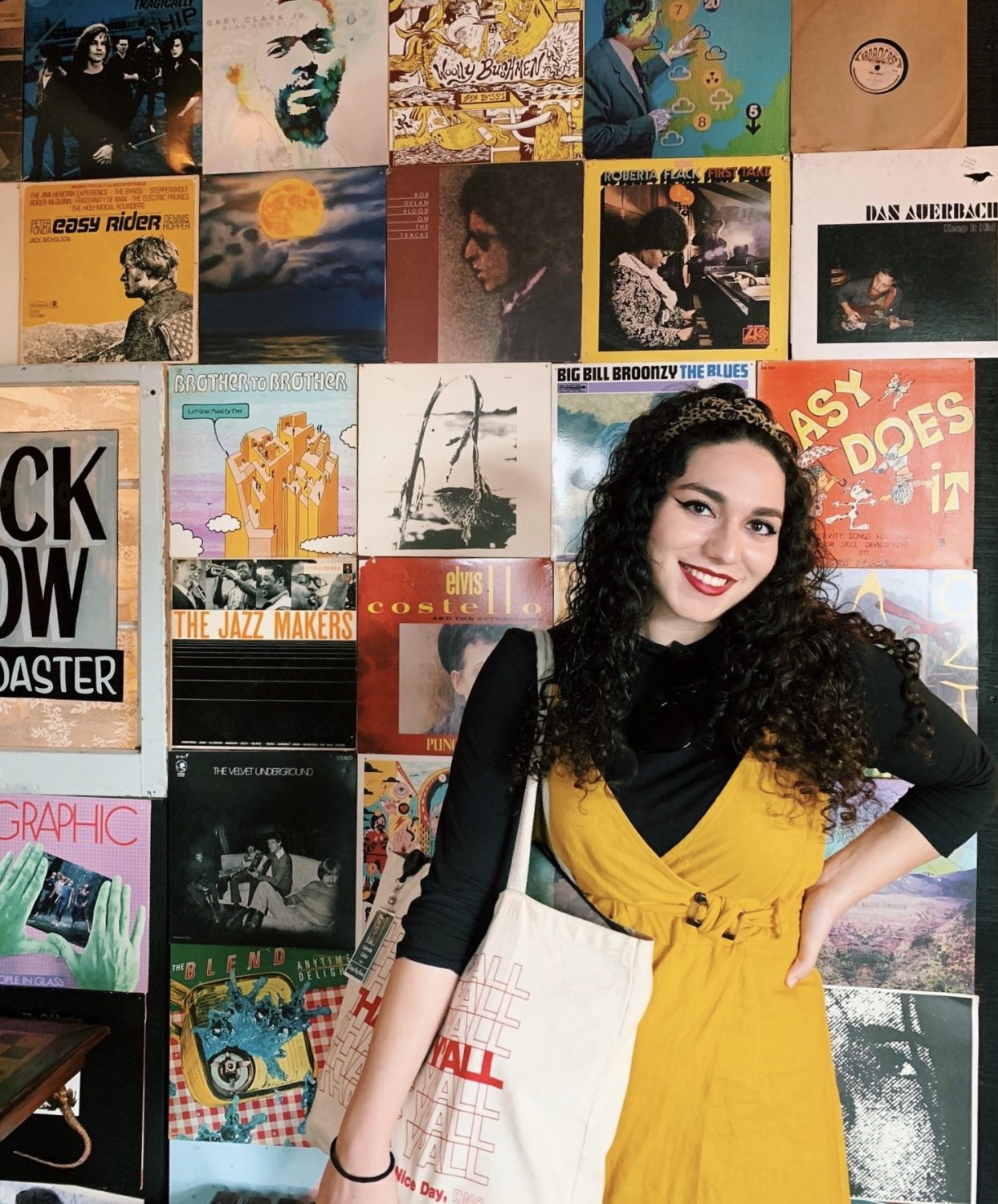For the past few years, most of Gabrielle Calise’s stories for the Tampa Bay Times have been steeped in nostalgia or oddities. There was her 2019 story on the thong-clad women who once made tons of money selling hot dogs on the side of busy roads in Tampa Bay. She’s written about a spaceship atop a Tampa strip club, an annual tradition of presidential candidate cookies and, most recently, wood storks.
Calise first began culling through old newspaper clippings and looking into landmarks as a Times intern. Her curiosity led to a treasure trove of stories, which she now nurtures as the Tampa Bay Times’ (which Poynter owns) culture and nostalgia reporter.
How do you cover sentimental longing for the past? We chatted with Calise about her unique beat, how she finds stories, and a lot more.
This interview has been edited for clarity and brevity.
What exactly is a nostalgia reporter?
I’m a reporter who focuses a lot on local history, feelings that people have for the area. But I can also sort of (offer) a newer take on nostalgia. I did a story on St. Petersburg’s street-poet-for-hire who reached out to me because he said, “What’s more nostalgic than a handwritten poem?” or a poem that, in his case, was typed up on a typewriter. I write a lot about things that I research using our newspaper archives or Florida Memory project, which is the Florida State Library and Archives database that they have online with lots of old pictures, articles and documents.

Last fall, Calise wrote a profile of poet-for-hire Giovanni Cerro of St. Petersburg, Florida. (Luis Santana, Tampa Bay Times)
I talk to a lot of historians, but I also spend a lot of time in Facebook groups and on Reddit, looking at posts that people will have like, “Do you remember this?” or “Whatever happened to that?” A lot of it, too, is combining more modern ways that we communicate to kind of touch back on what the area used to look like, how it’s evolved, and how that affects the people who live here.
What’s really cool about it is it kind of helps with multiple buckets of people. Obviously, people that really love this include: folks who grew up in the area, or maybe their family moved down here when they were younger and they’ve been here ever since; people who are natives in the area, but then had to move away. But it’s also really helpful for people who are moving to the area.
As we know, St. Petersburg and Tampa Bay as a whole is blowing up right now. You have a lot of folks who come to this area and there’s so much that’s crammed into this region, and a lot of it’s different from each other. You can go to one part of town and then drive to another in 20 minutes, and it just has a different feeling. There’s different landmarks, there’s different styles of homes and different traditions.
It’s really fun to think about those people who are coming in and they might think, “Why is that like that? Who put that there? What’s the deal with that thing?” and really help them demystify their new home. And for the people that have been here all along, these stories help them remember something that was really interesting, or confusing, or fun or just brings up some fun memories.
What drew you to this beat?
I’ve never quite seen myself fitting into some of the more traditional beats. In college, I wanted to try everything.
The topics that I kept coming back to were really fun: quirky people, interesting places, kind of a spirit-of-the-place that really makes it unique. What is something that this region is always going to have that sets it apart from somewhere else? I guess features reporter was the aspirational title and position. We always say we’re the fun team. We have the most broad range of things that we get to do.
I had applied at the Tampa Bay Times for (an internship) every year of college because I worked at a teen newspaper they used to publish called tb-two*. I was writing a lot of these fun culture-type stories there, so I figured I would love to get back to the newspaper. Eventually I was able to get an internship here in the engagement side of things. When I was working on Saturdays or Sundays and would have some extra time in between upkeep for the website and scheduling social media posts, I would talk to the editors that I was working with. A huge influence on me was John Martin, who used to be a research librarian at the time and moved into an editor position. He would come in on Sundays, and we would just talk about the region.
My family moved here when I was 10 or 11, and so I have that split perspective of someone who has grown up here. At this point, I’ve been a Floridian longer than I’ve been someone who is from the North. But I also can remember what it was like to first move here and not understand why there’s lizards running around … or understand the great things that every Floridian knows. John and I would have these conversations, and I remember we would talk about landmarks and old theme parks that he used to go to that had very specific themes that were kind of weird, like Six Gun Territory, where they had shootouts every day, or Cypress Gardens, where you could go and watch them water skiing and doing these great performances.
We also would ask questions, like why are there so many strip clubs in Tampa? As we were getting to talking, he also told me how I could find this out … “Here’s how you go to newspapers.com. Here’s how you go to our news library in the back of the newsroom, here’s how you can see the clips.”
I loved this idea of reporting based off of questions. My colleague Christopher Spata is really good at this, of always having a central question that you answer. I would read his stories that would say, like “Why does Publix have a giant scale?” At the same time, I was looking and seeing what other newspapers were doing, and I was really influenced by Hearken and the projects Hearken would do with newsrooms.
Sourcing either my own curiosity or the curiosity of readers gave me a wealth of topics that I could explore. I kept finding myself gravitating towards local history, and I kept calling the same historians and I kept going back to the same resources. Then I discovered Facebook groups, and just how many of them there are for our region. I would start to go and look and see what happened this month 50 years ago. What happened 30 years ago here? I would scroll and see an anniversary coming up. What a great news peg for me to explore.
I think the first one that really stood out to me was like this series of strip club history articles. My mom was like, “What are you doing?” Eventually I explained it’s not really about what you think it’s about. It’s not salacious to be salacious, but so much of Tampa’s power and money goes into these strip clubs. And why do we have so many? We have this reputation as sort of being like the strip club capital! Are we really? Do we have the most? Do we have the biggest? Not necessarily, but, let’s take a look at where we got this reputation. The more that I looked into it, the more ridiculous stories that came out of it. And I found myself just leaning fully into it.
They moved me into a hybrid social media and reporting position and then eventually, they were just like, “OK, be a full-time reporter and do these types of weird stories all the time.”
How do you find your stories? What I’m getting is that you rely on your natural curiosity, Facebook groups, and archives.
There’s a number of ways that I do it. I do love the local subreddits that we have, so r/Tampa, r/St. Petersburg, r/Florida. I have a giant Google Doc of many Florida and local municipality-themed groups.
A part of it, too, comes with just talking to people. I love having friends who are older and have lived in the area as long as I’ve been alive, or longer. They’re the ones who say, “Oh my gosh, you got to write about this place or that place.” But I also like talking to people who are newer to the area. My boyfriend is actually a really great sounding board because he came here from Ohio at the start of the pandemic. It’s really fun seeing it through the eyes of someone who is learning about Florida as he goes and has these natural questions.
When I went to the local bakery Alessi in Tampa, they had like the presidential cookies. You could buy a cookie for the candidate that you wanted to win and they would tally up. I texted him a picture and I said, “Oh my gosh, I have to buy a cookie for my mom because she is a fan of one of these candidates.” And he said, “You should write about that. Why did they do that? How long have they been doing that for?” It turns out it was this long storied tradition. So having a variety of perspectives and people to help tap into that natural curiosity is really helpful.
I do think that we take for granted the place where we live. No matter where we live, and no matter how wonderful it is, you get used to it. Just making sure that you’re constantly seeing it through the eyes of other people is really helpful. And I do ask readers a lot. We love to do engagement-based stories. For a while before the pandemic got crazy, I was doing a series that we called Florida Wonders where we invited people to send in questions about what they were curious about. A lot of times it’s our really wonderful readers who are calling or emailing in to say, “You should check this out.”
What makes something nostalgic for readers?
I think it’s something that brings up an emotion for you. It could be, “Gosh, I loved going to the airport when I was a kid and watching the planes take off” and, “I loved when we used to go to this weird roadside attraction that was honestly kind of hokey and definitely goofy, but man, remember when we used to do that?” It could be that, but it could also be you’re annoyed at something or you remember being like, “Oh, that’s such an eyesore. Why did they put that there?” Anything that really brings up memories — topics you would talk about if you’re out at dinner, or (having) drinks with your friends and you start to go into the memory that you had, I think qualifies as like a good nostalgia story.
There are different risks that you can take on this beat. I love to find people who are going on a mission. I really wanted to do something on the hot dog girls of Florida. They were these women who would wear thong bikinis and stand out on the side of major roads in Tampa Bay and other parts of Florida. They would sell hot dogs from carts. Cars would slow down and say hi, or pull over and get a hot dog. It was kind of a cheap gimmick, but it worked. It was this phenomenon that existed through the ’90s, but all the sudden the hot dog girls disappeared. I remember having a conversation with our newsroom clerk who said, “You should write about the hot dog girls.”

Valerie Workman, a former hot dog girl who was featured in a story by Calise for the Tampa Bay Times. (Photo courtesy of Valerie Workman for the Times)
I went on this crusade to find out what happened to them. The best thing happened. As I was online looking at Facebook groups, I found a woman who used to be a hot dog girl, and she was on a mission herself to find what happened to her long-lost hot dog sisters. So the story became both about the phenomenon of these women who would go out and get their money and do it in a really creative only-in-Florida way, but also who is the woman who is on a hunt for the other hot dog girls? How can I take this experience of diving into her memories and her personal crusade and share them with readers?
That kind of is like the core of what I’m trying to do. Not every story is going to have an amazing central figure who is in pursuit of something like that, but if you can tap into that, then that’s really helpful because it’s not only the nostalgia of the community, but you can live it through the eyes of one person.
What has been the greatest community response to one of your stories?
I think there’s a couple of topics that have really resonated with people, so it kind of overlaps. People love landmarks and I love landmarks, too. Every time we write about the Sunshine Skyway Bridge, someone has something to say about it. People really care about it and have a lot of feelings about it.
I wrote a story about these two men who were divers that would inspect bridges. On the day that the original Sunshine Skyway Bridge collapsed, they went to go help and they pulled bodies out of the water. It really stuck with them and no one had ever told their story before. So on the 40th anniversary of the Skyway, I told their story and kind of shared what life has been like for them ever since then. That was one where people really cared about it.
I remember one of the early stories that I did was asking people to tell me the landmarks that they felt were eyesores. People would write in and say, “I cannot stand the Beer Can Building in Tampa.” Those types of stories work really well.

In 2019, Calise wrote about the iconic spaceship atop the 2001 Odyssey, a strip club in Tampa. (Luis Santana, Tampa Bay Times)
Truly, anything about Tampa strip club culture, people can’t get enough of. So combining that with the landmarks, I did a story about the spaceship on top of 2001 Odyssey because I just wanted to know, why would you do that? Why would you put a spaceship on top of a strip club?
Have you ever received a response that surprised you?
All the time. When I first started doing this, sometimes I would get responses from people being like, “Well, this isn’t my experience” or, “I don’t think of it this way.” Sometimes you just call up the reader and you have a conversation and you say, “Well, what do you remember about it?” I think just everyone experiences these places differently.
Every day I’m surprised. Mostly, I’m just surprised that I get to do this job. Sometimes I worry, am I ever going to run out of stuff? I’ll have a time where I’m looking for stories and I end up doing like a shorter piece or working on something for my other beat, and then something will come up and I’m like, “Oh my gosh, let’s do it. Why didn’t I think of this earlier?”
What’s the most interesting nostalgia story you’ve told?
Well, obviously I love every single strip club story that I’ve written, starting with the one about the ’90s push to end the lap dance in Tampa.
Oh, I remember that story!
The funny thing about this is I was born in 1995, so a lot of this stuff was happening before I was born or when I was like a very small child. But that’s OK. I get to live vicariously through the clips and through the people that I’m talking to. And history is for everyone, right?
That story was one of my favorite things that I got to do. I got to learn about Joe Redner, who is the strip club king of Tampa, who went to battle against the city. There was this super long city council meeting that lasted, I think, 12 hours, and he really went to bat for his dancers and for his club so that they couldn’t implement this ordinance that would essentially make a lap dance something that was banned. They ended up passing this ordinance. The crazy thing is, it’s still on the books, but because Redner and so many other club owners and so many dancers made such a stink about it, enforcing it just became way too much of a hassle.
I also really love telling a story about someone who is closer to my age, in their 20s or early 30s, and who has that love for nostalgia and is doing something in the modern day to dig up as many pieces of the past as possible.

In 2020, Calise wrote about a Florida native who bought Cerro Gordo, a ghost town nestled in the Inyo Mountains of California. This is a photo of the former American Hotel in the town. (Photo courtesy of Brent Underwood for the Times)
There’s this guy who is from Florida and purchased a ghost town in California called Cerro Gordo, and he’s been living on the ghost town, trying to fix it up and learn about all the different artifacts that he finds during the whole pandemic — just him and a couple of the animals that are out there and some volunteers that come to visit him. That stuck with me. I think about him all the time.
I did a story about urban explorers who break into abandoned places and try to piece together the history of them. I think about that every time I pass by the YMCA building in downtown St. Petersburg. I’m like, “I know someone who went in there” and I think about the pictures they took and the stories that they tell.
I have one last one. There’s this guy who isn’t even a Floridian, but he’s fascinated with the nonstandard McDonald’s of Florida — the McDonald’s restaurants that have themes to them. And I think about how, every time I go to McDonald’s, I think about this guy on a quest to document the old McDonald’s of Florida.
So I take it that you can’t pinpoint just one most interesting story.
No. No, there’s not. I’m sorry.
No, it’s fine. I love that. And I actually want that to be part of the Q&A.
I just love them all so much.
If there’s a reporter who reads this and decides to try finding nostalgia stories in their own community, what would be your advice to them?
You should absolutely look for nostalgia stories, no matter who you are, what beat you have, or where you’re working. This is something where, no matter how people feel about the publication that you work for, they’re going to be grateful that you explored this. I absolutely encourage it.
I think the best place to start is looking into what’s out there. Like I said, Facebook groups are my bread and butter. I would recommend going in, searching and seeing if there are any “Remember” plus the name of your city. Then I would recommend people take a look at important anniversaries. This could mean calling up a local historian or someone at the university by you and just talking about, “OK, what are some of the big dates that people might want to know?” And then maybe think about topics: What is something about your area that people have super strong feelings about?
I think the best thing that you can do is just ask readers what they want to know about. Ask them, what have they always been curious about? Keep a running list.
It’s OK if you want to sit on some ideas, but the more you get out there and the more that you let yourself get carried away with your natural curiosity, the better that you’re going to do with this. I think, to have success in this type of beat, you really have to indulge that inner curiosity and involve people in your life in this.
Are you a journalist with a unique beat? Or did you work on an interesting project that you think we should know about? We’d love to chat with you. Please email Amaris Castillo at acastillo@poynter.org and we may feature you on Poynter.org.






